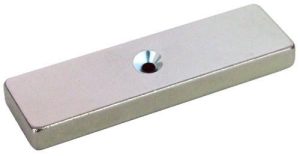
Neodymium magnets are recognized for their superior strength. A type of rare-Earth magnet, they are comprised of a neodymium alloy. While there are other types of rare-Earth magnets — samarium cobalt — neodymium is the strongest.
A typical neodymium magnet is about 10 times stronger than a traditional ferrite or ceramic magnet. Because they are so strong, they are commonly used in commercial applications. Like all magnets, though, neodymium magnets are affected by heat. If you’re planning to buy a neodymium magnet, you should keep it away from all heat sources.
The Impact of Heat
How does heat affect neodymium magnets exactly? When exposed to heat, neodymium magnets will become weaker. They won’t necessarily lose their ability to produce a magnetic field. Neodymium magnets, however, will typically produce a weaker field after being exposed to heat.
Exposure to temperatures of 175 degrees Fahrenheit or above will weaken neodymium magnets. Neodymium magnets feature atoms on the North and South poles that are aligned with each other. Heat causes these atoms to move out of position. Because the atoms are no longer aligned, the neodymium magnet becomes weaker.
To preserve their strength, you should keep neodymium magnets away from all heat sources. Heat sources can include furnaces, welding torches, ovens, etc. Even short-term exposure to a heat source can weaken a neodymium magnet.
What About Cold Temperatures?
Cold temperatures generally won’t weaken or otherwise harm neodymium magnets. It may, in fact, help neodymium magnets recover some of their lost strength. If a neodymium magnet is weakened due to heat exposure, cold temperatures may restore it.
Cold temperatures can realign the atoms within a neodymium magnet. Exposure to heat will cause the atoms to lose their alignment. Exposure to cold, conversely, will realign the atoms, thus restoring the neodymium magnet’s lost strength. As the atoms move back to their original, aligned positions, the neodymium magnet will become stronger. Cold temperatures will essentially reverse the effects of heat exposure by restoring the neodymium magnet’s lost strength.
It’s important to note that cold temperatures won’t fix all instances of heat-weakened neodymium magnets. When exposed to excessively hot temperatures, a neodymium magnet may fail to recover its lost strength. Cold temperatures won’t bring back the magnet’s lost strength.
In Conclusion
When using neodymium magnets, you should be aware of nearby heat sources. Neodymium magnets can withstand some fluctuations in temperature, but exposure to temperatures of 175 degrees Fahrenheit or above can weaken them.
